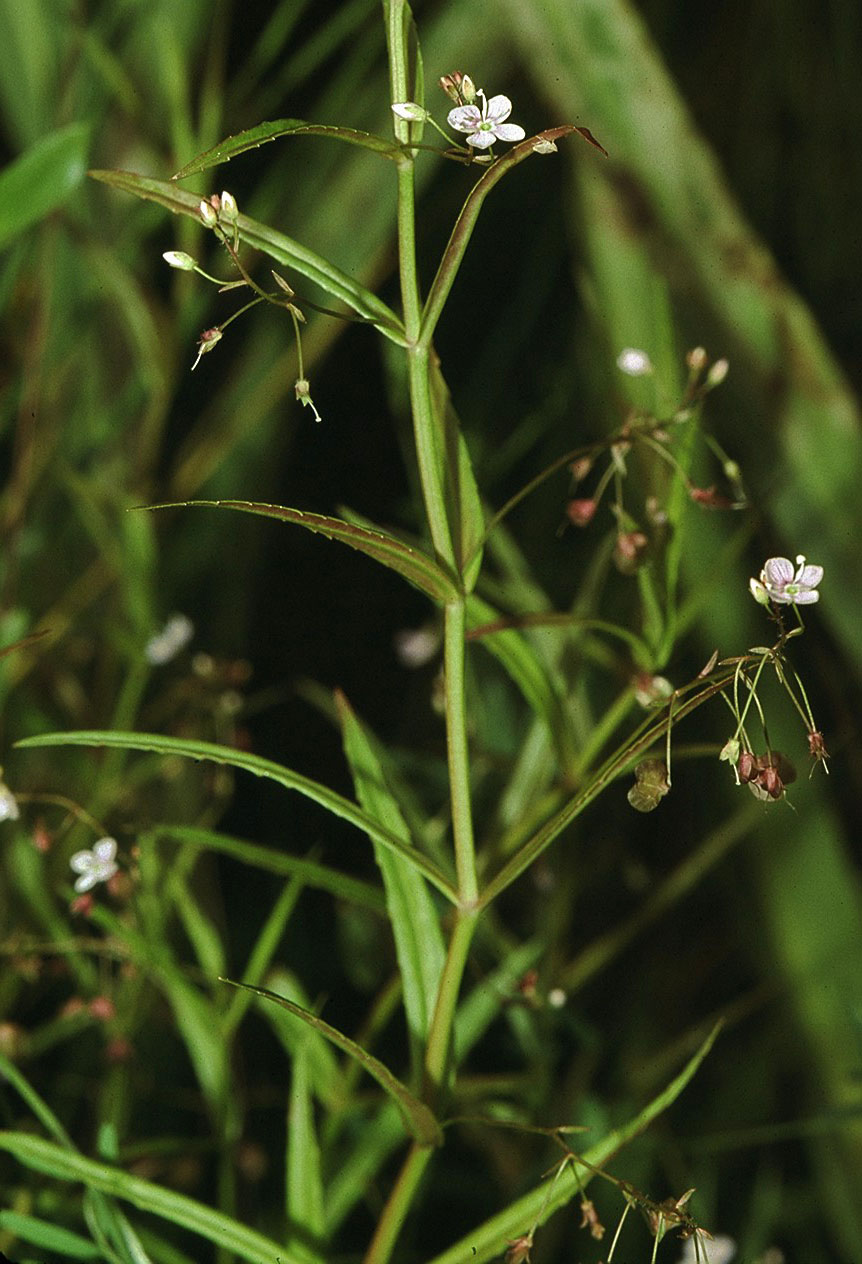Exploring Woodystem Speedwell
Scientifically recognized as Veronica scutellata and classified under Family: Scrophulariaceae, stands out as a distinctive Herbaceous perennial known for its unique characteristics. While it may also be found under other Synonyms, Veronica beccabunga, Veronica anagallis-aquatica.withNone commonly recognized form. You can use our free plant care app PlantPlants to identify Woodystem Speedwell.
Temperature
-10 C to 30 C
Watering
Consistently moist but not waterlogged
Fertilizing
Balanced liquid fertilizer (NPK)
Sunlight
Partial shade to full sun
Toxicity
Generally not toxic, but not commonly eaten



Appearance and Growth Of Woodystem Speedwell
At maturity, this species reaches approximately 15-30 cm tall, presenting Opposite, ovate leaves, dark green along with Small blue to violet flowers, 5 petals, typically in racemes, followed by Capsules containing small, flattened seeds. These features are supported by a reliable Fibrous root system, ensuring stability and sustained growth.
Woodystem Speedwell Origin and Habitat
Native to Native to Europe, Asia, and North America, Woodystem Speedwell thrives in Moist meadows, bogs, and along stream sides at elevations around From sea level to approximately 1,500 meters. Best suited for USDA Hardiness Zone 3-7. Whether grown indoor, in a curated garden or a more natural setting, its ecological requirements help maintain its vigor over time.



How to take Care of Woodystem Speedwell
Light, Soil and Watering Woodystem Speedwell.
You can use our free plant identify app PlantPlants to chose the best spot for Woodystem Speedwell, This plant prefers Partial shade to full sun and flourishes in Moist, rich, and well-drained soils; prefers clay to loamy soil with a soil pH of about 6.0 to 7.5.
Woodystem Speedwell needs watering,Consistently moist but not waterlogged, guided by PlantPlants app, You can get plants daily watering schedule. to maintain Wet to moist, ensure steady hydration. Applying water through Regular watering required, especially during dry spells supports even distribution and helps prevent overwatering or dryness.
Temperature and Humidity
Woodystem Speedwell performs best within 15 C to 25 C. Its ideal growth occurs at around 20 C, though it tolerates ranges from -10 C to 30 C. Additionally, maintaining Prefers higher humidity encourages healthy foliage and overall plant vigor.
Fertilization & Soil Health
Feeding with Balanced liquid fertilizer (NPK) at the recommended Seasonal Application Frequency on PlantPlants App keeps nutrients balanced. Incorporating Organic matter such as compost enhances soil structure and fertility, while staying alert to Yellowing leaves, stunted growth helps you adjust care as needed to maintain optimal plant health.
Routine and Maintenance
Regular attention ensures this plant’s beauty and longevity. Late spring or early summer after flowering for Deadheading and cutting back to promote bushiness tidies its appearance, while Every 2-3 years if container grown may be necessary as it grows, requiring a Increase by 2-3 inches in diameter increase and a fresh Well-draining potting mix with organic matter. for Staking or Support. Not typically needed due to small size.
Seasonal Changes and Propagation of Woodystem Speedwell
During Winter, when underground parts may remain dormant, growth may slow and some Evergreen in mild climates; may change color in fall if grown in cooler regions can occur. For those looking to propagate, consider Seed, division, and stem cuttings and provide Cold stratification for 2-4 weeks, then sow in a moist medium when starting from seed. If using cuttings, follow Take semi-hardwood cuttings in mid-summer and place in a moist medium until rooted to ensure successful rooting and healthy new plants.
Pests, Diseases and Prevention
our free plant identify and care app PlantPlants can help you diagnosisWoodystem Speedwell problems.Though generally robust, keep watch for Aphids, slugs and remain vigilant against Downy mildew, root rot. Implementing Ensure good air circulation and avoid overcrowding and applying Insecticidal soap for pests; avoid overwatering to prevent diseases when issues arise will help sustain the plant thriving.
Companions and Uses of Woodystem Speedwell
This plant pairs nicely with Other moisture-loving plants like marsh marigold, juncus and shows Minimal known effects on other plants, making it a flexible choice for various Ideal for water gardens, bog gardens, and perennial borders.
Edible and Cultural Aspects
the Edible Parts: Young leaves and flowers (in moderation). Toxicty of Woodystem Speedwell, Generally not toxic, but not commonly eaten. learning about its Spring; leaves can be used fresh or dried, Used as a salad ingredient or garnish; historically used in folk medicine, and High in vitamin C and other nutrients can be intriguing for culinary explorers. Some traditions highlight its Traditionally used in herbal medicine for various ailments or note its Often associated with wetland ecosystems and biodiversity.
Conservation and Status
With an Not currently listed as threatened or endangered, proper Protection of wetland habitats and mindful landscaping practices
Frequently Asked Questions
1. What is woodystem speedwell?
Woodystem speedwell is a herbaceous perennial plant known for its blue to violet flowers, found in moist habitats.
2. How do I propagate woodystem speedwell?
You can propagate it by seeds, division, or stem cuttings.
3. What type of soil does woodystem speedwell prefer?
It prefers moist, rich, well-drained soils; clay to loamy soils are ideal.
4. How often should I water woodystem speedwell?
Keep the soil consistently moist, with intervals of about 3-5 days in summer.
5. Is woodystem speedwell edible?
Although generally not toxic, it is not commonly consumed and should be used in moderation.
6. What pests affect woodystem speedwell?
Common pests include aphids and slugs.
7. How do I prevent diseases in my woodystem speedwell?
Ensure good air circulation and avoid overcrowding to minimize disease risk.
8. Where is woodystem speedwell native to?
It is native to Europe, Asia, and North America, usually found in wetlands.
9. When should I prune woodystem speedwell?
Prune back in late spring or early summer after flowering to promote bushiness.
10. What are the ideal growth conditions for woodystem speedwell?
Ideal growth conditions include partial shade, consistently moist soil, and a temperature range of 15-25 C.




